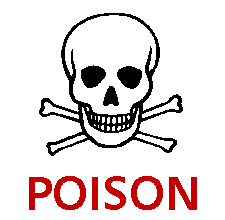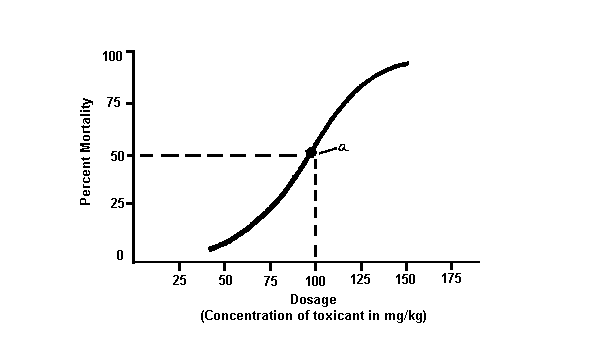
Toxicity
When we say that conventional insecticides are toxic, everyone understands that this means they can kill you. But it’s not quite that simple. Common table salt is also toxic. It can be used as a pesticide. Yet salt is an essential component of all living organisms; we would die without it. In fact, it turns out that most chemical substances are toxic if their concentration (dosage) is high enough. As toxicologists often say, “The dose makes the poison.”
The graph below illustrates this principle:

Different species often respond very differently to the same dosage of a toxicant. Some pesticides, pyrethrum is a good example, have a very low LD50 for humans and other mammals. These chemicals are relatively safe to use (low hazard) because the rate we use to kill pests is far below the dosage that would injure humans. Other insecticides (e. g. parathion and aldicarb) are far more hazardous because their application rate is much closer to their lethal rate for humans.
The LD50 value also depends largely on how an organism is exposed to a toxicant, whether it is ingested, inhaled, or absorbed through the skin, and whether exposure occurs over a short period of time (acute exposure) or over weeks or months (chronic exposure). For this reason, toxicity data always includes information about how the toxicant was administered: acute oral, acute dermal, chronic oral, or chronic dermal.
The slope of a dose-response curve gives a good indication of how a target population will respond to a toxicant. When all members of the population react in a similar way, their dose-response curve is quite steep (Figure 2A). The population is said to be homogeneous. On the other hand, if some members of the population are much more sensitive than others (the population is heterogeneous), then the dose-response curve is flatter, like Figure 2B.


